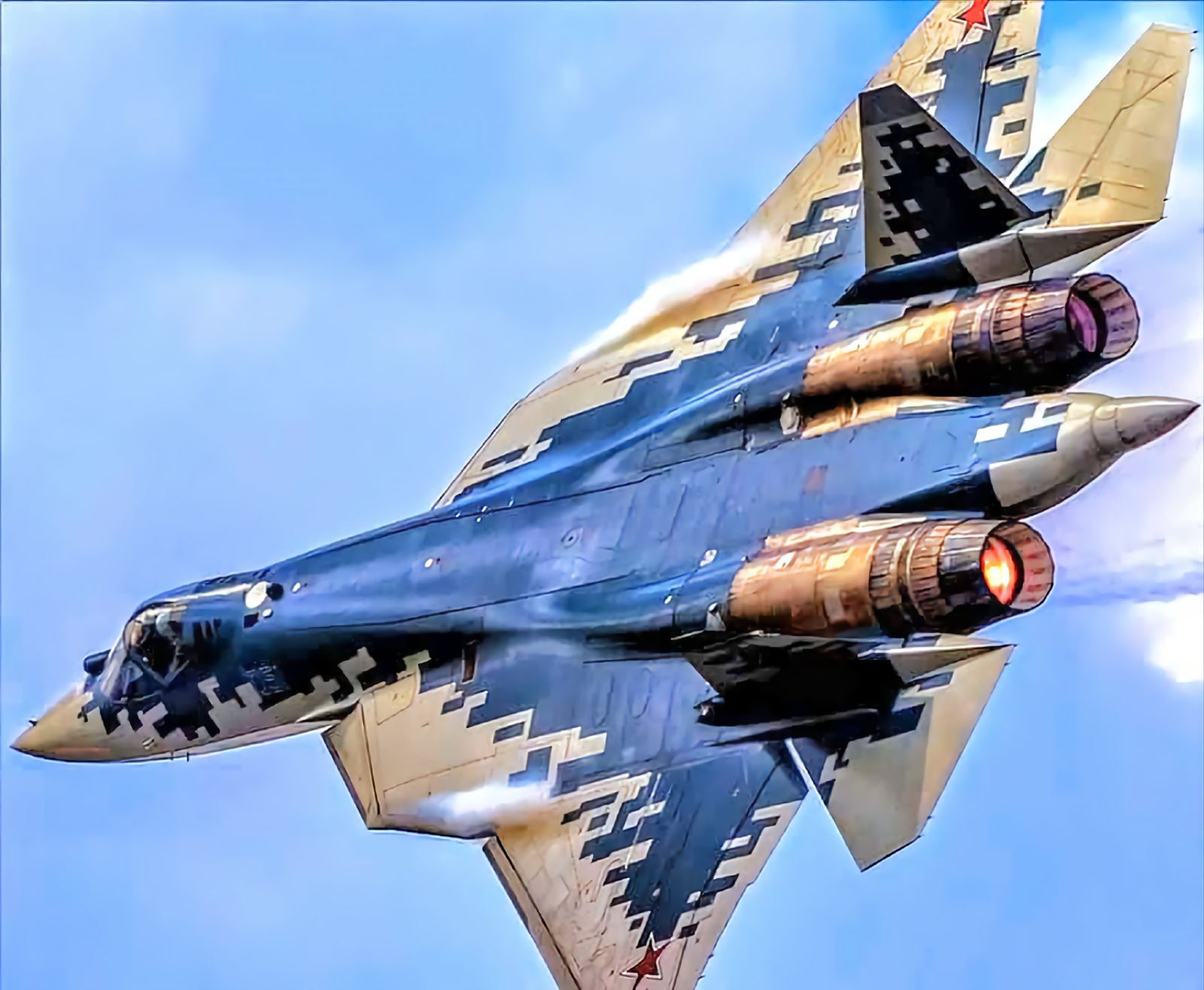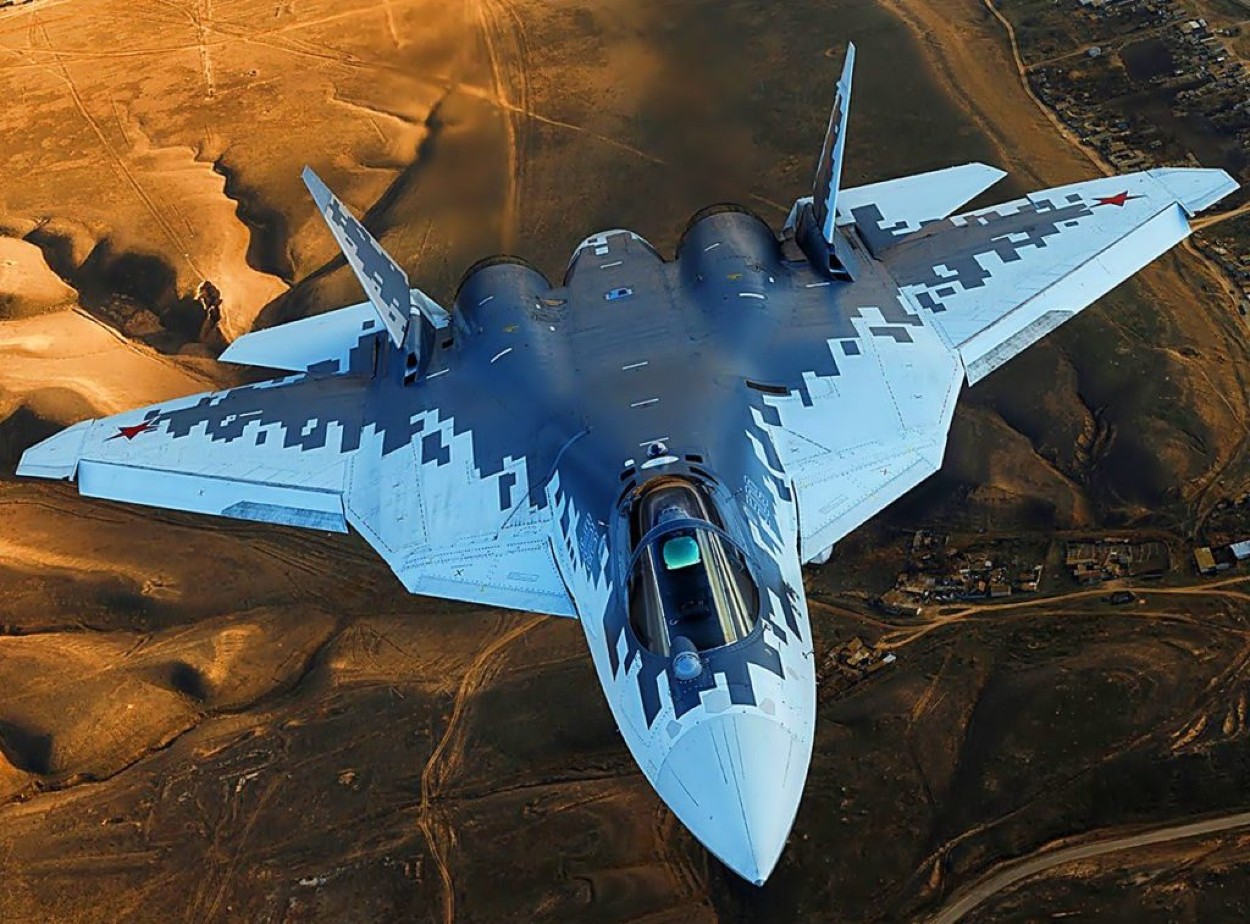Ahead of Army 2023, Vladimir Artyakov, First Deputy General Director of Rostec, told Izvestia that Russia plans to significantly increase the rate of production of the Su-57, which is currently undergoing operational trials in Ukraine.
“We fully fulfill our obligations to the Ministry of Defense. Now the aircraft is undergoing a trial operation in the Russian Aerospace Forces. This year, our cooperation led by UAC plans to significantly increase the pace of production of these aircraft under the state contract,” Artyakov said.
(The Eurasian Times, in October 2022, posted an analysis on Russia’s use of Su-57 Fighters in the Ukraine War.)
Production Rate
The Su-57 is currently under low initial rate serial production, which is planned to be stepped up in a phased manner. In November 2020, a source told TASS that the production rate for the Su-57 will eventually grow to 15 aircraft a year.
In August 2020, Izvestia reported that the full production rate would be achieved by 2024. Likely, Rostec is striving to achieve a maximum production rate earlier than planned.
Rostec is fulfilling a state contract signed in 2017 for 76 Su-57 fighters to raise three regiments of 24 aircraft, plus a flight of four possibly destined for the Lipetsk combat training center.
The state contract is to be fulfilled by 2028. In the past, Rostec has repeatedly expressed confidence in fulfilling the state contract ahead of contractual obligation.
As of December 2022, Rostec subsidiary United Aircraft Corporation (UAC) had delivered 10 Su-57 fighters. According to current plans, by the end of 2024, the UAC will deliver 22 fighters to the RuAF.
Evolving Capabilities
According to Artyakov, the Su-57 platform is evolving. “Its combat capabilities are being increased; the most modern technologies are being introduced into the vehicle. That is, its effectiveness continues to grow.”
The UAC announced that a modernized Su-57 stealth fighter jet took to the skies on its maiden flight on October 21, 2022, at Zhukovsky flight test center near Moscow.
“A set of onboard equipment with extended functionality, intelligent crew support, and the possibility of using a wide range of new weapons is being tested on the aircraft. It is also possible to install the engine of the second stage on the aircraft,” the UAC press service said.

You can read a detailed Eurasian Times analysis of the new capabilities here.
Stage 2 Engine
Artyakov also announced that deliveries of Su-57 fighters with engines of the second stage would begin under the current contract with the RF Ministry of Defense.
“Airplanes with the engine of the second stage are now undergoing flight tests. Already under the current serial contract, it is planned to supply the Su-57 with a new engine – the UEC and UAC are working on this,” Artyakov said.
He added that the Su-57 is adapted for using the engine of both the first and second stages. “Even with the engine of the first stage, the fighter meets the basic requirements for a fifth-generation aircraft,” said the first deputy head of Rostec.
When originally conceived, the Su-57 was envisaged to be powered by a clean sheet design engine referred to as Izdeliye (Product) 30, enabling it to cruise at supersonic speed without using gas-guzzling afterburners.
The aircraft was, however, developed and tested using an interim power plant – NPO Saturn Product 117 engine, which is derived from the AL-41F-1S after-burning turbofans developed for the Su-35.
The Izdeliye 30 will improve the thrust and fuel efficiency of the fighter and reduce weight and maintenance requirements.

The Izdeliye 30 engine features a serrated exhaust nozzle, also called a chevron nozzle, which improves thrust efficiency, stability, maneuverability, and performance while reducing engine noise.
Most importantly, serrated exhaust nozzles can reduce the infrared (IR) and radar signatures of the aircraft. By altering the exhaust plume’s temperature distribution and shape, serrated nozzles can make the fighter harder for IR and radar sensors to detect and track the aircraft.
Conclusion
Russia’s decision to boost the production rate of the Su-57 suggests that the fighter has performed well so far during trial operations in Ukraine.
The Su-57’s rear aspect stealth will improve dramatically with the Stage 2 engine, which features serrated nozzles like the F-35. As a result, the fighter will be able to penetrate Ukrainian airspace more.
With the inventory of Su-57 fighters steadily building up and an increasing number of Russian fighter pilots becoming operational on the aircraft, Russia is likely to increase the operational deployment of the Su-57 in Ukraine.
More significant than the performance and contested airspace penetration capability of the Su-57 is its ability to carry advanced hard-hitting weapons such as the Product 70 (Gremlin) Hypersonic Missile and the Drel Glide Bomb.
- Vijainder K Thakur is a retired IAF Jaguar pilot. He is also an author, software architect, entrepreneur, and military analyst. VIEWS PERSONAL
- Follow the author @vkthakur




